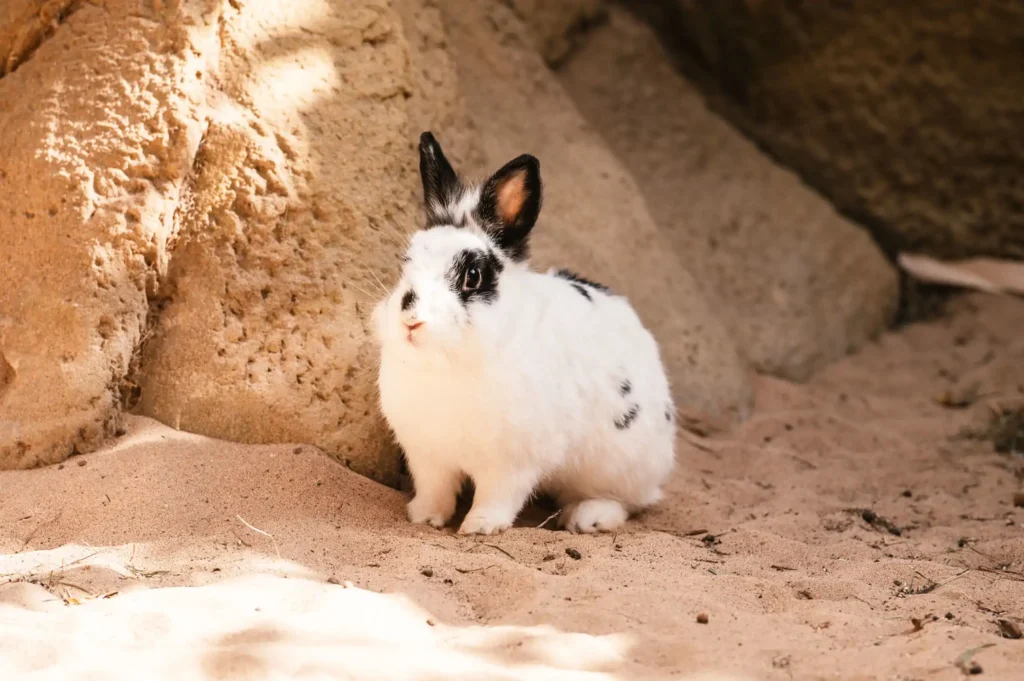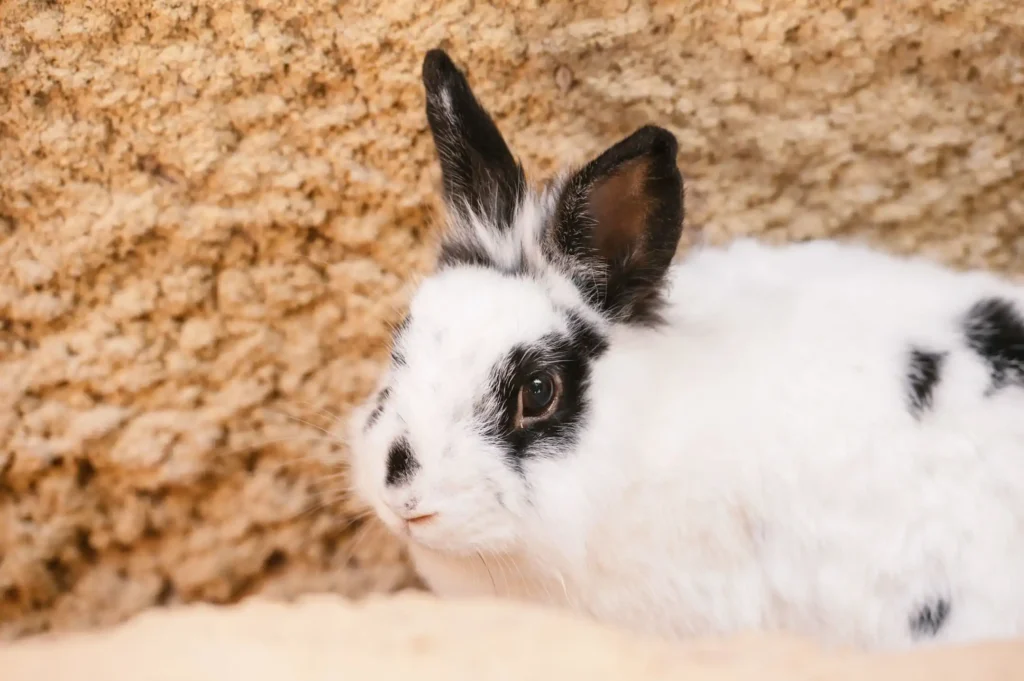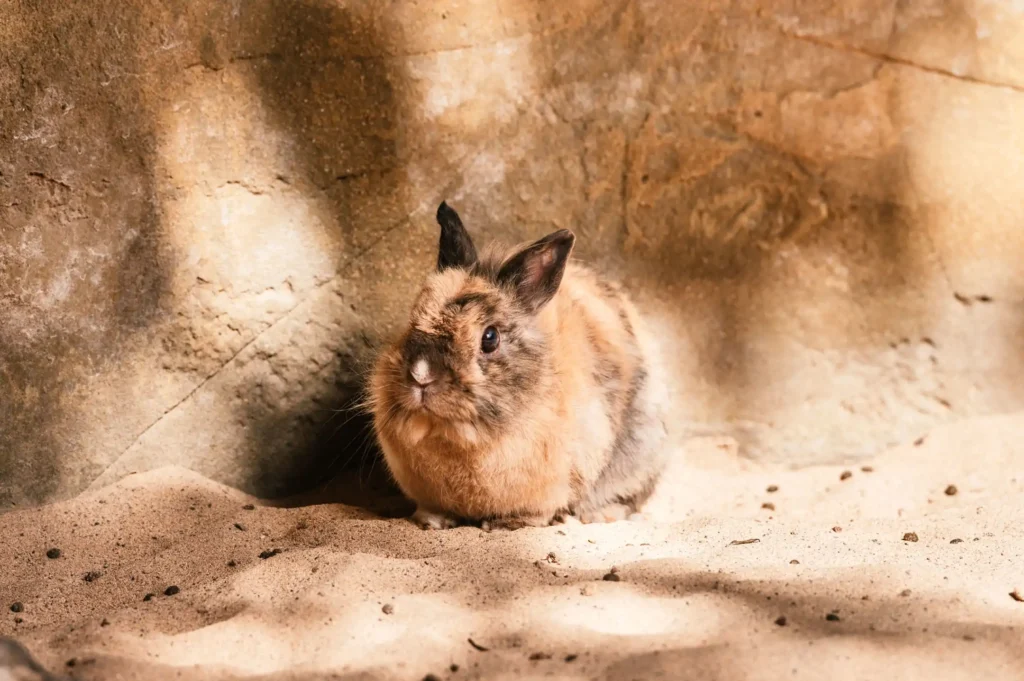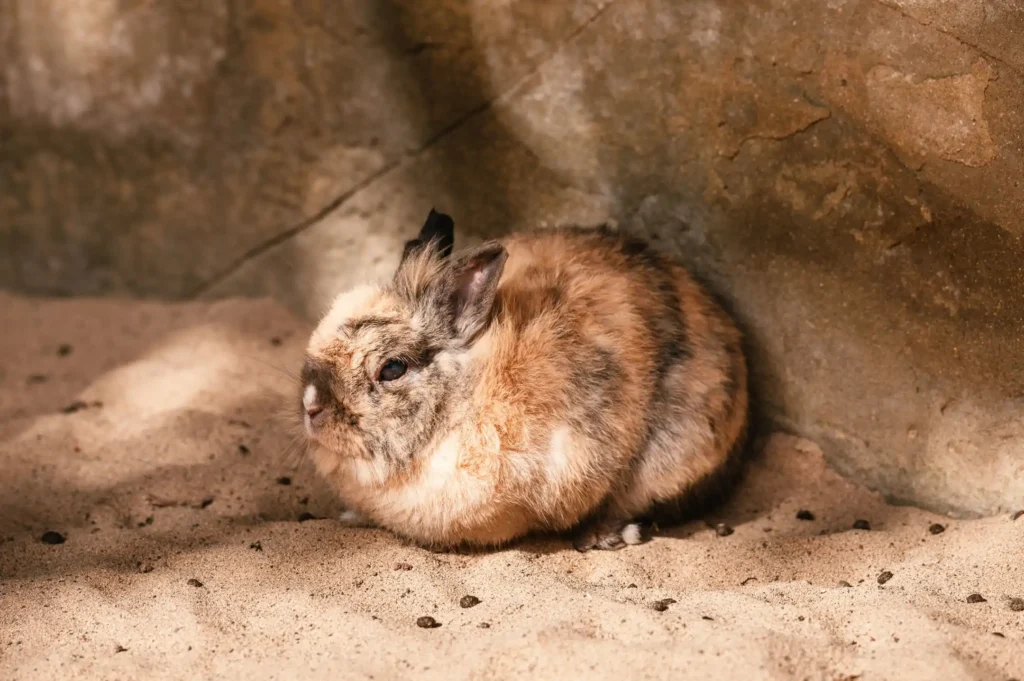Rabbit and hare are the common names for certain small mammals which are characterized for having a small body covered by soft fur, long ears and short tail. Although the names rabbit and hare are often used undifferentiated, there is significant differences between both species. Rabbit youngs are born naked, hairless and blind; rabbits are gregarious animals and live in medium-sized colonies called warrens (the only exception are the North American Cottontail Rabbits, which do not dig burrows and do not socialize). The hares’ offspring is born fully furred and with eyes open. Hares do not dig burrows, but build simple nests on the ground called forms. They are not gregarious.
Another significant difference between rabbits and hares is the difference in size. Hares are of bigger size, their ears are longer and with black markings at their ends. Furthermore, the skulls of rabbits and hares are completely different. Both species are either brown, grey or white; some of the species in northern countries have a white coat in winter which turns into brown in summer. Their lips are divided into two halves under the nose, called harelip. In all the species the ears are more long than large. Their paws have five “fingers” with claws. Their hind legs are stronger than the front legs. They are ideal for running. Although they are defenceless, their ear and eyesight are very well developed, as well as alarm systems like drumming, for which they are in some way protected against predators.
Some species run short distances and then try to hide in burrows, while other species, mainly hares, are great runners and can reach up to 70 km/h.
Main characteristics
Rabbits and hares are distributed all over the world. They share some common characteristics, such as high fertility. Both have numerous offspring, with litter sizes between 3 and 8, and they reproduce from 4 to 8 times a year. The gestation cycle averages 31 days. Youngs reach sexual maturity at approximately 6 months of age. They can get up to ten years old. Rabbits and hares range from 1 to 5 kilos in weight, and 30 and 60cm in length. They feed on organic material of all kinds, including tree bark. Rabbits prefer areas with loose and dry soil, where they can easily dig their burrows. Hares like habitats with lots of shrubbery, where they can build their nests in. Both rabbits and hares are of high value for the human being. Their fur and meat is highly appreciated and their cinegetic use is high. However, they are also considered a “pest” for agriculture in some parts of the world, where they are supposed to destroy entire tree and other plantations.
Centuries ago, the European or Wild Rabbit spread out throughout all the European countries with warm or moderate climate. Today, they can be found also on the American continent, Australia and New Zealand. They adapt to any surrounding that guarantees sufficient forage and an adequate soil that allows digging burrows. Rabbits are largely crepuscular, being most active around dawn and dusk. They are gregarious animals and live in groups with a strict hierarchy. The rabbit is rather fertile and voracious. In some regions it is considered an enemy to farming and pastures for livestock.
There are numerous species with a restricted range of distribution: the Volcano Rabbit is a species that lives in a limited area of volcanic hills of just 40km of length around Mexico city. The Cottontail Rabbit is the most common wild rabbit species of North America. Its name derives from the white fur of its fluffy tail which reminds of cotton balls. These two species are extremely fertile.
The Domesticated Rabbit origins from the ancient wild rabbit of Europe and Africa. There are at least 66 different species, such as: Angora/ Belgium/ German/ Himalayas/ Siberian/ Patagonian/ Flemish Rabbits etc. The external characteristics of the Domesticated Rabbit are variable, for example the colour of the coat, which can be totally white or black, or the length of the hairs, which ranges from short to long. In case of danger, Domesticated Rabbits warn each other by drumming on the ground with their hind legs.
The utilisation of rabbits in our society is diverse: they are bred as pets, for genetic investigation, for laboratory experiments, for the production of meat or leather for clothes, etc.
Rabbits have been introduced in South America, Java, New Zealand and various islands all over the world. Australia and New Zealand are the best examples for the fast spread of these animals: in New Zealand, close to Invercargill, seven specimens were introduced around 1860. Short time after that, the number of rabbits had multiplied and the control of the propagation turned out to be a serious problem. In Australia, a mortal virus affected the rabbit population. In 1951, the artificial use of this virus became popular in order to control de rabbit population. The illness produced by the virus was called Myxomatosis. It provided relief in those parts with sufficient water and thus insect vectors necessary for the spread of the disease. However, Myxomatosis was introduced in Europe and spread readily, provoking the death of thousands of rabbits in Great Britain, Belgium, France and Spain, where rabbits play an important role in the diet of certain predators.
For some investigators, the common hares of Europe, Africa and Asia belong to one single species of great ecologic value. Others shall consider them two different species: the Mediterranean Hare, which is of minor size and lives in Africa, East Asia, the Iberian Peninsula and some parts of Italy; and the European Hare, which inhabits the majority of the European countries and Western Asia. In Spain, both species coexist. Mountain Hares can be found all over Europe and also in the United States. They are characterized by their ears, which are shorter than the European Hare’s. Their tail is entirely white.
Jackrabbits can be found in the western part of the United States and Canada. This species is the fastest of all rabbits and hares, reaching up to 70 km/h. Furthermore, hares are very fast hoppers, they can cross 4,5 and up to 6 meters in one single hop. It is known, that hares are possible vectors in the transmission of Tularemia, a potentially serious illness of bacterial origin which affects humans.
Scientific classification: Rabbits, hares and jackrabbits are leporids belonging to the genus Lepus and the Lagomorph order. The scientific name of the European Rabbit is Oryctolagus cuniculus, the Volcano Rabbit’s latin name is Romerolagus diazi. The Cottontail Rabbit belongs to the genus Sylvilagus. The scientific name of the Common Hare is Lepus capensis (two species belong to this group: the Cape Hare, which is the Mediterranean species, and the European species, Lepus europaeus). The Mountain hare is called Lepus Timidus and the Black-tailed Jackrabbit Lepus californicus.
Rabbit, Oryctolagus cuniculus
Facts: How are they? Small mammals of approximately 40cm of length and a weight ranging between 1,35 and 2,25kg. Their legs are short and the colour, thickness and length of their fur is very variable. Normally, the colour of their coat is dark brown/grey, with shades of red or black. Their belly region is grey and underneath the tail we can find white parts. Where do they live? In sandy and hilly areas with bushes and wooden plants. We can also find them in open areas, while they avoid deserts and thick forests. How is the species geographically distributed? The rabbit is native to France, the Iberian Peninsula and the northwest of Africa. However, they can be found in all parts of the world settled by humans. What do they feed on? They feed on vegetables like pasture and herbaceous plants, but also include tree bark, young bushes and tender brushes in their diet. Frequently, they invade human farmlands.




